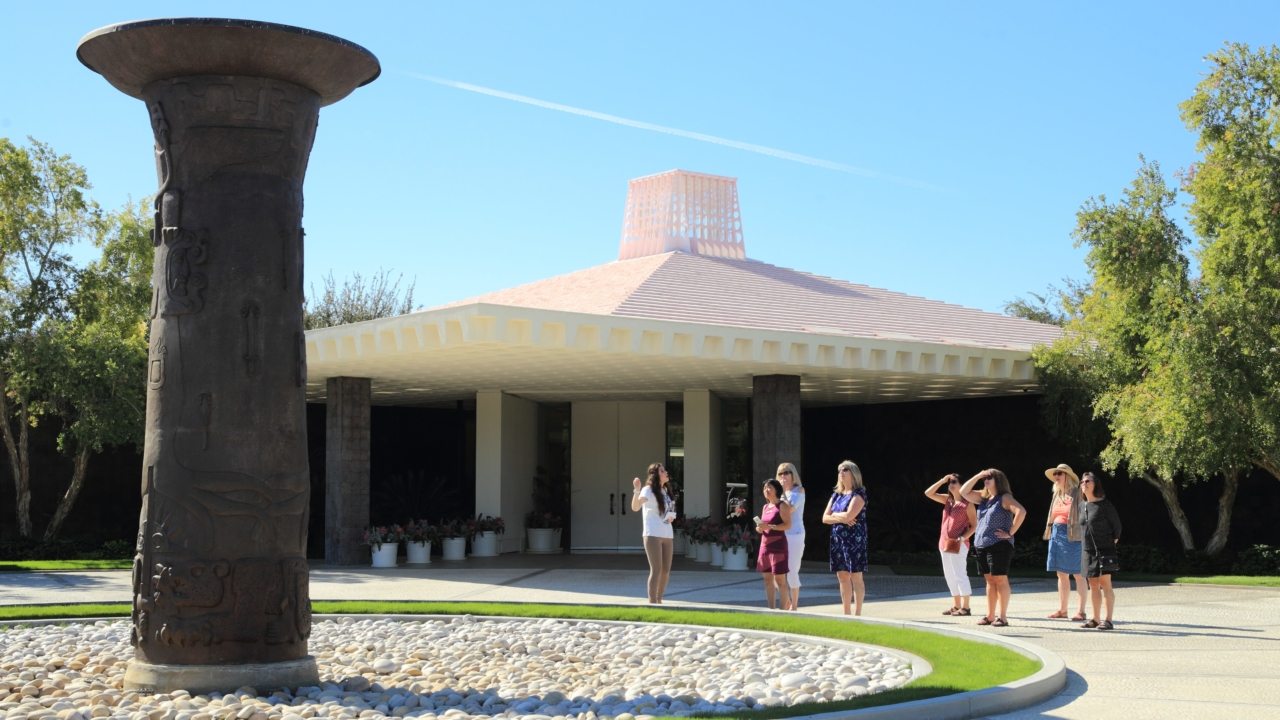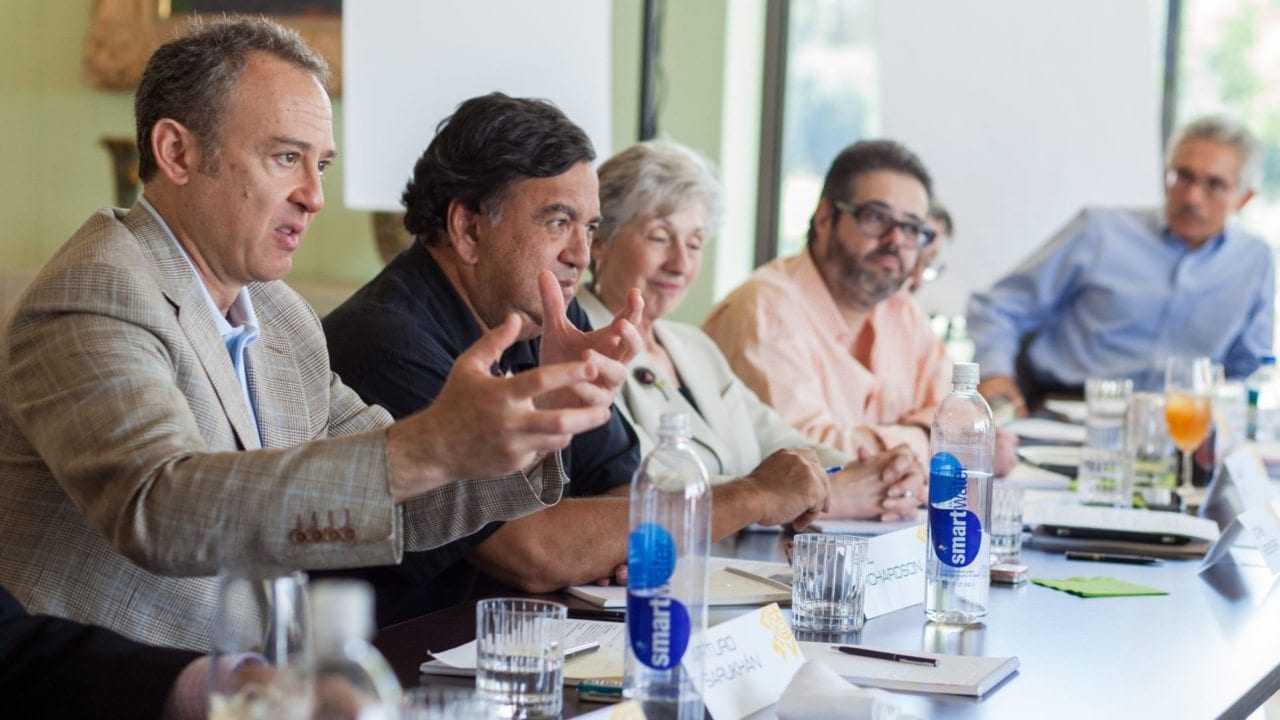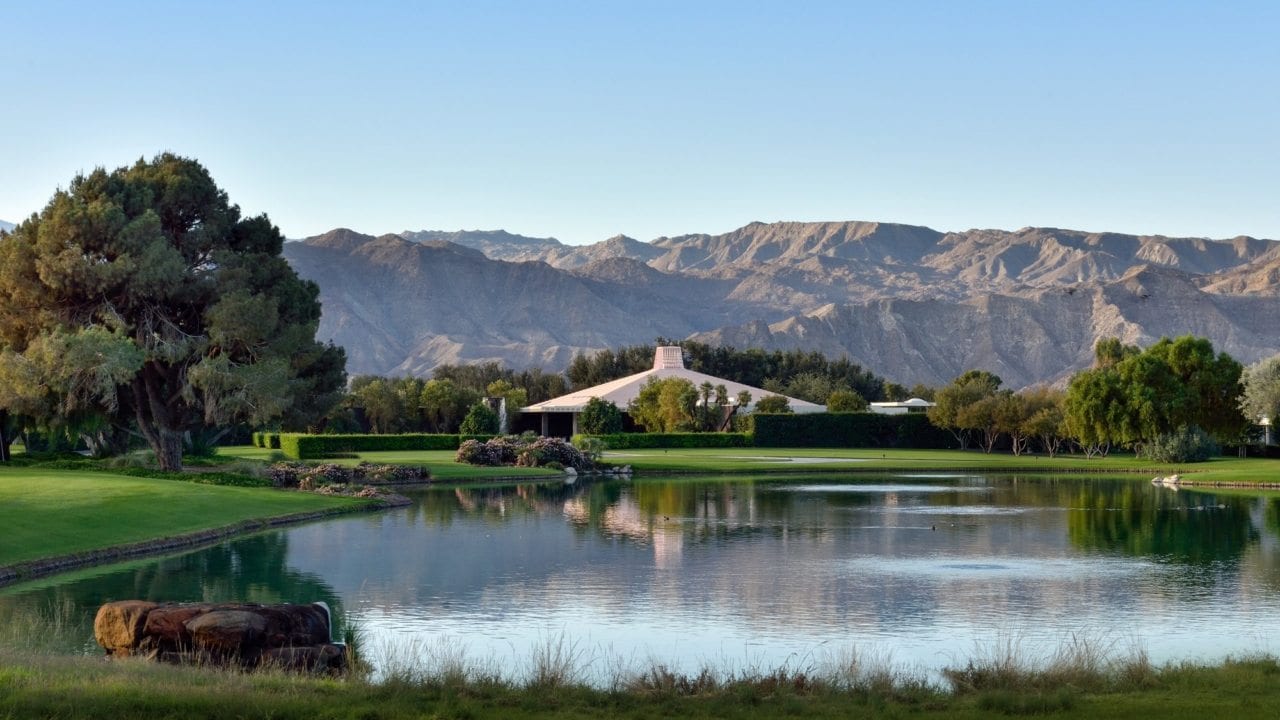Sunnylands Takes Major New Steps to Reduce Water Consumption
As plans were being made to transform Walter and Leonore Annenberg’s private home into a retreat center and diplomatic venue, The Annenberg Foundation Trust at Sunnylands pursued a conversion strategy with a modern-day imperative: Reduce water and energy consumption.
The goal, established in 2009, set the stage for a series of infrastructure improvements at the Midcentury Modern estate in Rancho Mirage, Calif., and the subsequent use of Sunnylands as a living laboratory for experiments in environmental sustainability.
Now, that culture of environmental stewardship, coupled with a state mandate to conserve water during California’s extraordinary drought, has produced the largest water savings at Sunnylands to date.
From June 2015 through February 2016, water use dropped 33.7 percent compared to 2013 figures. Gov. Jerry Brown had asked Californians to reduce water consumption by 25 percent during that period. The water savings are even higher when compared to the historic use of water on the estate over a three-decade period ending in 2009 – a whopping 39.7 percent reduction.
“Far and away, this is the biggest measure we have taken to date,” said Director of Operations Pat Truchan, whose department manages the grounds at Sunnylands, including its legendary golf course.
Routinely, golf courses in the Coachella Valley seed their turf with ryegrass in fall and winter to maintain a lush green landscape. While sun-loving Bermuda grass goes dormant in the cold, ryegrass thrives. But the overseeding process requires a heavy watering schedule, in part because ryegrass seeds need to be kept wet to germinate.

Aerial views of the historic estate. Photo from 2012 is on the left, one from Jan 2016 is on the right.
“The Governor’s mandate (to conserve water) allowed us a little freedom to try some things,” Truchan said of the move to greatly expand an experiment, begun a year earlier, to scale back on overseeding to save water.
During the 2014-15 season, 44 acres of the estate, including the golf course fairways, were not overseeded. On the ground, the result was a landscape of contrasting of greens, browns and yellows. This season, the number of acres removed from the overseeding program has more than doubled to 96.
Instead of the wall-to-wall carpet of green turf that Sunnylands has sported in winters past, the turf now is almost uniformly a beautiful yellow gold. Golf course greens are painted green with a non-toxic turf paint.
Only 10 acres of land were overseeded this year, primarily lawns open to public tours that surround the Annenberg home and the half-acre Great Lawn at Sunnylands Center & Gardens. Those lawns were overseeded to preserve the home’s historic vistas and, in the case of the Great Lawn, to maintain the space where the public often is invited for free programs.
“We are constantly balancing the preservation ethic, our adaptive reuse requirements, and a commitment to sustainability,” said Janice Lyle, director of Sunnylands Center & Gardens.
Given how different strains of Bermuda grass on the 200-acre estate may react to cold weather, Truchan said there was a risk that the landscape would look uneven – mottled or blotchy – as turf fell into dormancy. Fortunately, that did not happen. “They all reacted the same. They kept cold enough. It is a beautiful golden color,” he said.
But the look is not permanent. The Bermuda grass will awaken and turn green as winter wanes and temperatures rise.
The experiment to curtail overseeding is consistent with the improvements Sunnylands had made to save water and energy even before the 50-year-old estate was opened to the public in 2012. Those improvements include installation of a state-of-the-art irrigation system, an advanced water-monitoring system and relining all the lakes on the property to prevent water loss and seepage. Sunnylands also replaced 60 acres of turf with mulch and drought-tolerant tall grass, largely around the perimeter of the estate.
Truchan said he is confident Sunnylands’ seasonal water savings will exceed the call Governor Brown made in 2015 for cities and towns across the state to cut water use by 25 percent through February.
He credited grounds Superintendent Drew Kerr for managing the process, saying Kerr experimented over the past several months with the irrigation program’s frequency, duration and water flow.
“It all goes back to that living laboratory idea,” Truchan said. “Drew was able to play with different scenarios to find what has the greatest impact on water savings while doing the best job of maintaining the aesthetics of the property.”



